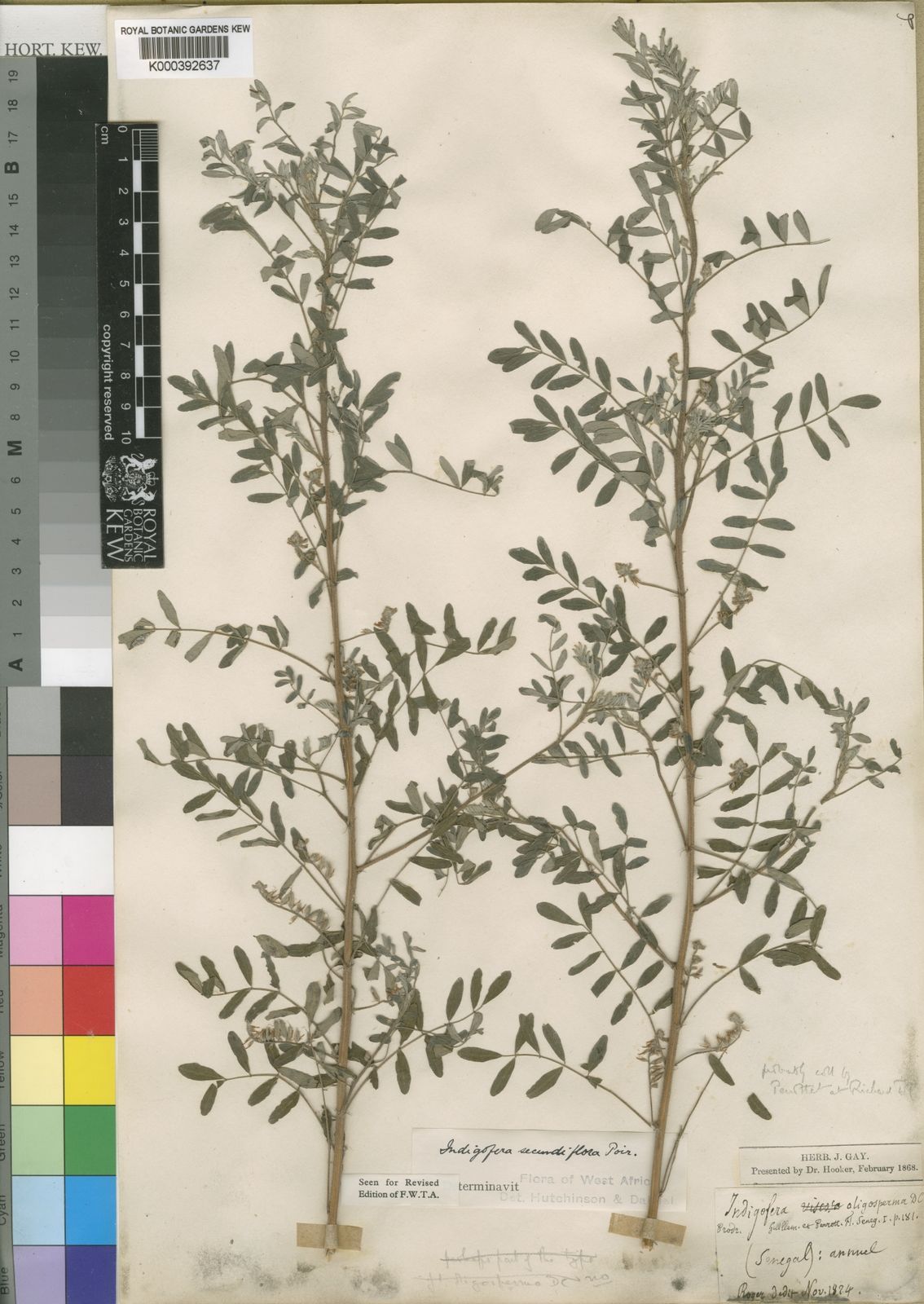Indigofera secundiflora

|
|
Scientific
Classification
Synonyms
Species
ID: NMP-234;wfo-0000606404 Common
Names: Senegal:
Fula-Pulaar (Senegal) nanande vorde (JB), Tukulor varbulel (JB), Manding-Soce
bratiina (JB), Serer kordio kor (JB), kordio nak (JB), nonan a kob (JB), nonan
gor (JB), nonan nak (JB), Wolof ngandial nak (JB). Nigeria: Hausa dan markee. Description Indigofera
secundiflora
is an annual plant that grows primarily in seasonally dry tropical biomes.
Detailed morphological descriptions are limited in the available sources. Distribution
and Habitat This
species is native to Tropical Africa, with its range extending across countries
such as Nigeria, Benin, Burkina Faso, Cameroon, Ghana, Guinea-Bissau, Ivory
Coast, Mali, Niger, Senegal, and Togo. It thrives in seasonally dry tropical
environments. (Plants of the World Online) Medicinal
Properties While
specific medicinal uses of Indigofera secundiflora in Nigeria are not
well-documented, various species within the Indigofera genus have been
utilized in traditional medicine across Africa. For instance, some Indigofera
species are known for their anti-inflammatory and antimicrobial properties.
However, detailed information on the medicinal applications of Indigofera
secundiflora is limited. Known
Toxicity There
are no widely reported toxic effects associated with Indigofera secundiflora.
However, as with all medicinal plants, it is advisable to consult knowledgeable
practitioners before any medicinal use. Additional
Information The
Indigofera genus comprises over 750 species, many of which are known for
producing indigo dye. While Indigofera secundiflora is not specifically
noted for dye production, its role within the genus suggests potential
applications. Further research is needed to fully understand its properties and
uses. References
External
links
|
|
| Compounds of Indigofera secundiflora | |
| References |